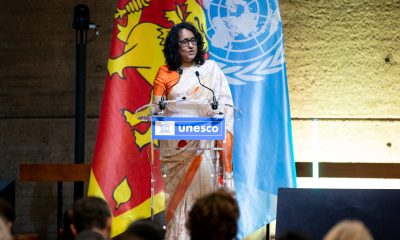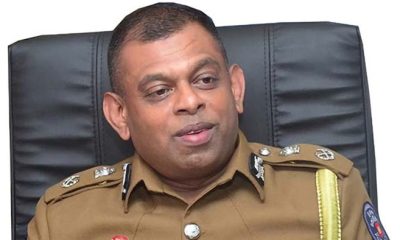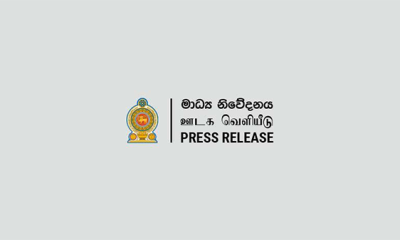Business
Ceylon Shipping Corporation turns tables on its financial performance
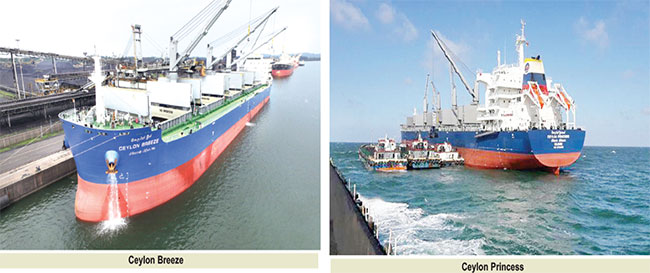
Reports loss reduction of Rs. 1.15 billion in two years
Posts Rs. 636 million profit in fist 8 months of FY 2021/22
If CSC’s fleet size is increased, country can save millions of dollars spent on ship chartering, says chairman
by Sanath Nanayakkare
The Ceylon Shipping Corporation (CSC) has made an impressive turnaround in its fortunes from a loss-making State Owned Enterprise (SOE) to a profit making SOE within two years.
In the Financial Year 2020/21, CSC has posted a profit of Rs. 636 million in the first eight months of financial year 2021/22 , changing the situation completely different from the losses it made in 2018/19 (Rs. 1,523 million) and in 2019/20 (Rs. 1,085 million) which had caused problems for them.
 CSC Chairman, Wineendra S. Weeraman, told The Island Financial Review that the profit curve of CSC was a well thought out one.
CSC Chairman, Wineendra S. Weeraman, told The Island Financial Review that the profit curve of CSC was a well thought out one.
“When I assumed duties as chairman of CSC in December 2019, nobody was interested in taking over the helm at the CSC under such dismal financial circumstances,” he said.
Weeraman said that he first gave priority to settling a loan of USD 75 million taken from the People’s Bank by the previous management for purchasing two ships.
“This loan was on a Treasury guarantee and I decided to clear all arrears because I didn’t want to carry it forward paying a huge interest on the loan capital. In the accounts, I saw that we had an outstanding payment amounting to Rs.1,400 million which had to be collected from Lanka Coal Company – the procurement entity of the CEB. Through an official process, I was able to recover these funds and use it to repay that loan. Whatever I had to pay I paid and I took the decision to charter out our ships at the opportune moment despite the threat of Covid-19. Those were the key decisions I took and that is how we are making profits now,” he said.
Further speaking he said:
“Currently the main business of CSC is delivering coal to Norochcholai power plant. In this connection, CSC deals with Lanka Coal Company and the Ceylon Electricity Board (CEB). The CEB charters our two bulk carriers ‘Ceylon Breeze’ and ‘Ceylon Princess’ each with 62,000 deadweight tonnage, to bring in coal to Sri Lanka from South Africa. The CEB pays us in Sri Lankan rupees when they charter our vessels, but when they charter foreign vessels for the purpose, they pay in US dollars.”
“CSC brings in one third of the total coal requirement for Norochcholai Power Plant. We can help save a massive amount of US dollar payments made as ship chartering costs if CSC has its own fleet to deliver the entire requirement of coal.”
“At the height of Covid-19, despite concerns among experts that we should keep the two ships at anchorage, upon verifying of IMO regulations and the advice of Harbour Master and Medical Officer of the Sri Lanka Ports Authority, I decided to send our ships to sea and bring in much needed foreign currency to the country, without leaving the ships idling at sea incurring losses for six months. With that operation, we were able to bring in 3 million USD within about 6 months.”
“When we charter a ship to transport coal to Norochcholai Plant, procured through Lanka Coal Company, the charter hire alone costs between US$ 1.3 million and 2.0 million on top of other costs for each charter. If we have another four vessels in our fleet, we can prevent this foreign currency outflow happening time after time.”
“If we bring the fleet up to six vessels with a tanker or two, we can bring in the entire supply of coal, rice, sugar and even petroleum products without chartering international vessels over an infinite number of years. How many millions do we pay for transportation of fuel and other commodities? Being the purchaser of these products, we should be able to dictate the terms of their transportation. We can ask them to use our vessels. If the government says all fuel imports to Sri Lanka needs to be carried on CSC vessels, then we can save a lot of millions of dollars.”
“The policymakers of the government should support us in this regard. They should support key government organisations such as CSC and put some muscle into its capacity to make it more productive in its operations and empower it to support the economy of the country in a more robust way. We have made requests to policymakers pertaining to this objective including the former chairman of CSC who could assist us in fund arrangement,” he said.
“CSC’s annual turnover is about Rs. 3.8-4.0 billion whereas Sri Lanka Port’s Authority’s annual turnover is about Rs. 55 billion. Comparatively speaking, CSC is also contributing to the economy in a notable way with the limited resources it has. The CSC has great potential for growth if it gets the necessary policy support.”
“CSC employs 125 staff in-house. On each vessel we have about 22-23 crew members – that’s about 46 on both vessels and we have a reserve pool of crew for crew changes. Our salary structure is very competitive with that of international shipping lines. We pay a ship master about USD 8,500- 9000 per month. We have to pay such salaries to ensure deployment of qualified and skilled people on board our vessels. However, the upside here is that the entire crew is Sri Lankan”.
“Before Covid when we chartered out our ships to international parties during the off-season, we earned USD 8000-13,000 per day per ship. With the spread of initial Covid wave, these prices came down to USD 6,500-7,500. After the second wave of Covid, the freight rates skyrocketed to about USD 35,000-40,000. So this is the best period for the global shipping industry and we should make the best out of this situation for CSC.”
“The greatest difficulty we have with the CEB is that we fight with them to get priority to us in charter services and they also prefer to give it to outsiders upon finding one single fault that could easily be rectified. And even after providing the services for them, they take months and years to pay our dues. Then we can’t operate maintaining a positive balance sheet.”
“I would like to urge the policymakers and top officials to take bold policy decisions to beef up the fleet of CSC.”
Talking about his future plans he said:
“There are several projects which I intend to start here. There were negotiations in 2017 – with Bangladesh Shipping Corporation to operate a feeder service here. If you take Port of Colombo, its capacity is 7 million TEUs. In Bangladesh it is 3.5 million. Twenty percent of their cargo is coming to Colombo. That is about 700,000 TEUs. Bangladesh ports are very congested. Ship owners don’t like to go there because it takes days to reach a terminal. If we sign this bilateral agreement, they are going to save on the number of days spent on transportation of their cargo. If we can sign it, CSC will be able to earn about USD 2 million per year. The SLPA also will earn from it when TEUs are brought to the Port of Colombo. It will be a win-win-win situation for all parties.”
“Bunker prices are very high here compared to Singapore. Sometimes we don’t get the bunkering business unless the prices fluctuate in a competitive manner to ship operators. If we supply them bunker off-shore or out of the port, they will prefer to get oil at a lesser price. I have submitted a proposal for a floating bunker as well.”
“And then the ferry service between Colombo and Tuticorin which was started in 2011. I am planning to resume this service. Not only Tuticorin, we can try various other ports in India.”
“Going further, I have a plan to arrange medium size cruise vessels between Colombo, Male and Goa. If we arrange these tours then everybody will find them exciting and enjoy these tours bringing us revenue.”
“CSC wants to get involved in passenger transportation as well. I have signed an agreement with Sail Lanka Yachting Group, a global company that builds yachts in Sri Lanka. They are already operating from the Colombo Port City Marina. They have agreed to manufacture bigger ships to partner with CSC’s plans for passenger transportation.”
“These are plans for the future and I have submitted them to the policymakers. If we want to make a maritime hub here, these things should be facilitated.”
“Ship repairing is another area. I also wait in queue to get CSC ships repaired. In addition to Colombo Dockyard, we need to build another dockyard, ideally in Trincomalee.”
“Finally, We need to be mindful of Sagarmala Programme which is underway in India targeted to culminate by 2035. It is designed across areas of port modernisation, new port development, port connectivity enhancement and port-linked industrialisation. One day it is going to affect us. So we need to equip all critical installations here to stay in the business and thrive in the new maritime sector emerging in the region. I appeal to the policymakers and top officials of the government to support CSC with bold policy-making for its exponential growth, bolstering key business verticals of the industry at the same time.”
Business
U.S.-Russia diplomatic thaw ignites Sri Lanka’s hopes for trade windfall
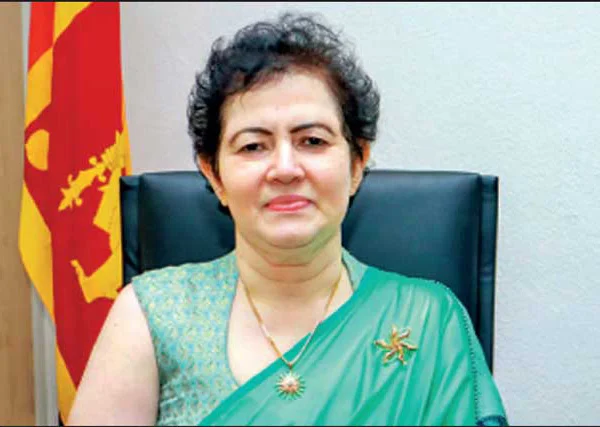
Sri Lanka’s Ministry of Industries and Entrepreneurship Development Secretary Thilaka Jayasundara voiced confidence yesterday that warming U.S.-Russia relations could catalyse economic opportunities for Sri Lanka, during a forum hosted by the National Chamber of Commerce.
Speaking at the ‘Russia-Sri Lanka Development of Trade, Economic, and Banking Cooperation’ event, Jayasundara, a seasoned official with experience across multiple political administrations highlighted that eased secondary sanctions resulting from improved Moscow-Washington dialogue could unlock favorable trade conditions for Sri Lanka. Her remarks drew visible approval from Russian Ambassador Levan Dzhagryan, seated nearby.
“Sri Lanka’s balanced, neutral foreign policy positions us to benefit from any collaborative outcomes of U.S.-Russia talks,” she asserted, underscoring the nation’s potential to leverage evolving geopolitics for trade and investment gains.
Jayasundara didn’t miss the opportunity to urge Sri Lankan trade chambers to collaborate with the Export Development Board (EDB) to diversify exports and maximise foreign exchange earnings.
“Businesses and banks present here should explore to forge stronger B2B linkages for mutual benefit at the breakout sessions,” she added, referencing discussions at the forum that connected SMEs and large firms in agriculture, fintech, pharmaceuticals, industrial manufacturing among other sectors.
The secretary’s optimism aligns with Sri Lanka’s broader strategy to navigate global economic headwinds by capitalising on diplomatic shifts and expanding its export portfolio.
According to the EDB, the total export value from Sri Lanka to Russia was USD 144.25 Mn in 2023 and total imports from Russia to Sri Lanka for the same period were USD 393.55 Mn. Official data for 2024 remains pending.
The Russian delegation that took part in the B2B meetings was headed by Dr. Alexander Rybas, Trade Commissioner of the Russian Federation.
By Sanath Nanayakkare
Business
Hemas Hospitals named Official Healthcare Partner for JOE-PETE Big Match 2025

Hemas Hospitals has proudly partnered with the JOE-PETE Big Match 2025 as the official healthcare provider, continuing its strong tradition of supporting community events and ensuring the safety and well-being of all participants and spectators.
As one of Sri Lanka’s most anticipated annual school cricket encounters, the JOE-PETE Big Match brings together passionate fans, students, and alumni from St. Joseph’s College and St. Peter’s College. With thousands expected to attend, Hemas Hospitals steps in once again, marking its fifth consecutive year of involvement, to provide expert medical support on-site.
“As a leading private hospital network, we’re proud to be a part of this iconic event. Our partnership reflects our commitment to community health and to being there where it matters most,” said Dr. Pradeep Edward, Director General Manager, Hemas Hospital Thalawathugoda. “We want all attendees to enjoy the event with peace of mind, knowing that their health and safety are in good hands.”
During the match days, Hemas Hospitals will deploy on-site medical teams, ambulances, and a qualified sports medicine medical officer to respond to any health emergencies or injuries. From first aid to injury management, the team is equipped to handle a wide range of situations with the efficiency and professionalism that Hemas is known for.
“Our practice of having highly trained medical staff and emergency support continues,” said Anjana Cramer, Business Development Manager. “Our aim is to be proactive, responsive, and accessible throughout the event.”
In addition to healthcare support, Hemas Hospitals will have a strong brand presence at the event, with Hemas flags, A-boards, a branded ambulance, and the medical team visibly positioned throughout the grounds.
“We want this partnership to not only represent medical readiness but also our larger message of promoting health and unity through sport,” said Duwayne Rozario, Executive – Business Development. “It’s about more than just treatment, it’s about being an active part of the community.”
Business
Sun Siyam Pasikudah; unique cluster of luxury chalets looking out to Eastern sea
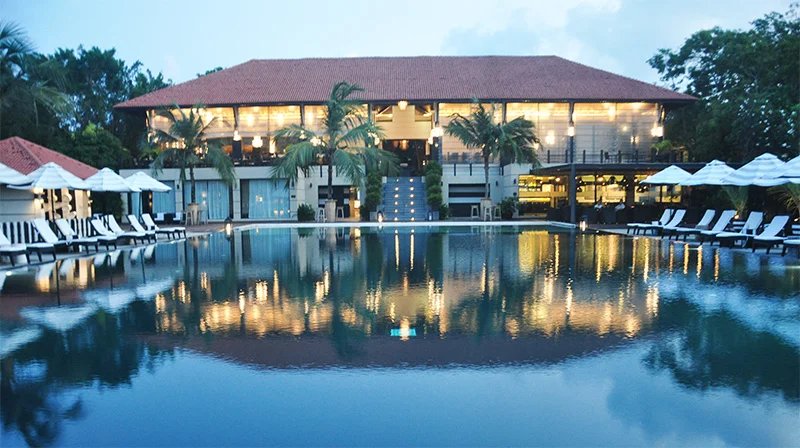
Weddings on the beach, an aqua platform to be served dinner in the sea; four ocean pavilions, informal camaraderie, more so, come as you are atmosphere for informality and bonhomie un matched in any resort.
What are we talking about? Just a cautious; yet unavoidable blend for a holiday; and an atmosphere of ‘let yourself go’, experience unmatched in a resort hotels.
Where are these ‘happenings’? At the Sun Siyam Pasikudah.
Just so, assuming you’ve been to the Maldives, and factually, it’s a demand driven destination, to the US, so too, we assume, Sun Siyam Pasikudah is a growing destination for holidays in the warm waters of the Indian Ocean surrounding the East coast of this island.
Why surrounding? Simple; just that Sun Siyam Pasikudah perched by the sea, apart from the warm waters bordering the resort; we are also of the positive atmosphere of the shallow sea abutting the picturesque appeal viewed from the sea. Appealing to tourists already enjoying the numerous attractions of this resort facility.
Our observations were French, Germans and other Europeans were already enjoying the facilities of Sun Siyam Pasikudah.
General Manager Arshed Refai was on hand to give us detailed explanation on facilities guests could expect and enjoy and numerous offerings that appeal for long stays. Quite regularly, he said, guests are quite reluctant to depart. Particularly Europeans who we observed enjoying the sun and more so walks along the beach.
Additionally, Ministry of Tourism provided train services as well to encourage tourist traffic to the East to enjoy the growing popularity of this resort and other resorts we observed in the area.
GM Refai further said the dining experience, and varied choice of cuisine catered to each national from West to East; which, he said, was quite in order to cater to choices in food and individual taste desires.
Originally launched in 2014 as Sun Aqua Pasikudah, the property underwent a rebranding in 2020, becoming part of Sun Siyam Resorts Collection and adopting the name of Sun Siyam Pasikudah. ‘Was it popular among local tourists’? He responded positively that its appeal was growing, related to the chain of other destinations in the East. Additionally, its popularity and appeal, particularly to its chalets and Five Star luxury was in reality not an available concept elsewhere.
Chef Dilan Jayasundera, explained varied cuisine and food flavours he was adept in producing to ensure guests were not in need, food vice.
He further said a broad cross section of tastes was catered to.
Asst General Manager Keerthi expanding on additional facilities said 34 rooms were villa style accommodation spread over the land. Four ocean pavilions complemented a formal atmosphere.
GM Refai further said 90 guests at peak accommodation enjoyed international cuisine.Excursions, to the fish market, sea observations in glass bottom boats to observe fauna and flora under water, including the varied amphibian fish population were of great appeal.
Questioned on any Maldivian influence, he said, Sunsiyam was not influenced by the Maldives, but its style was of broad appeal.
The resort’s transformation showcases bold monochromatic interiors balanced with rich golden tones, creating a unique, sophisticated, and chic environment. The resort offers distinct culinary adventures, immersing guests in Sri Lanka’s vibrant flavors and colonial traditions. Noteworthy options include The Cellar, Sri Lanka’s largest wine cellar on the eastern coast, the Tea House with an extensive tea collection for a delightful tasting journey, Slice & Grill, a fast-casual poolside concept with a retro design, and the Beach Shack, a tropical paradise with Caribbean vibes.
By Steve A. Morrell
-

 Sports5 days ago
Sports5 days agoSri Lanka’s eternal search for the elusive all-rounder
-

 News4 days ago
News4 days agoBid to include genocide allegation against Sri Lanka in Canada’s school curriculum thwarted
-

 News6 days ago
News6 days agoGnanasara Thera urged to reveal masterminds behind Easter Sunday terror attacks
-

 Sports15 hours ago
Sports15 hours agoTo play or not to play is Richmond’s decision
-

 Business7 days ago
Business7 days agoAIA Higher Education Scholarships Programme celebrating 30-year journey
-

 News5 days ago
News5 days agoComBank crowned Global Finance Best SME Bank in Sri Lanka for 3rd successive year
-

 Features5 days ago
Features5 days agoSanctions by The Unpunished
-

 Features5 days ago
Features5 days agoMore parliamentary giants I was privileged to know


